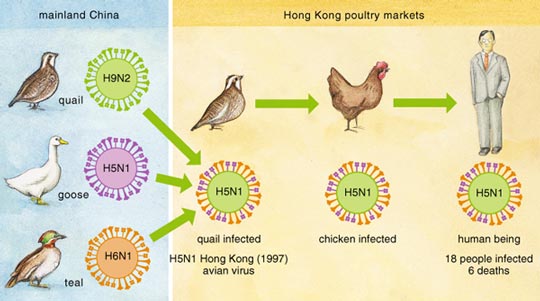|
Figure 5. Hong Kong's deadly H5N1 (1997) virus is believed to
be a product of three viral strains found respectively in quail, geese and
teal from mainland China. The birds are housed together in Hong Kong's poultry
markets, which provides an optimal environment for genetic reassortment.
Surveillance studies in the poultry markets have shown that quail are susceptible
to all tested strains of influenza viruses, and that they can serve as an
intermediate host between ducks and chickens. Quail may have been very important
in the genesis of the 1997 H5N1 influenza virus, which killed six people.
To reduce the probability that other H5N1 flu viruses will emerge, quail
are now banned from the live chicken markets in Hong Kong. The H5N1 virus
re-emerged in Hong Kong's poultry markets in 2001, necessitating the slaughter
of all poultry for the second time in four years. Poultry markets appear
to play an important role in the emergence of reassortant influenza viruses.
|
